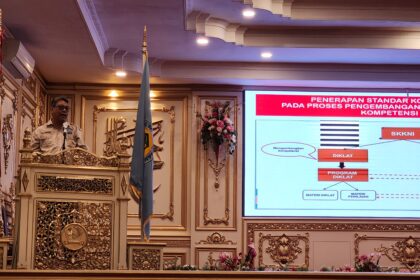[ad_1]
While the US Air Force’s new B-21 stealth bomber is still largely shrouded in mystery, the service released a new artist’s rendering featuring an interpretation of the future aircraft’s high-tech design.
Famed testing ground Edwards Air Force Base in California serves as the backdrop for the rendering, where the 420th Flight Test Squadron will plan, test, analyze and report on all flight and ground testing.
The rendering also was accompanied by an official fact sheet, detailing the aircrafts mission, potential features along with background information.
Designed to perform long range conventional and nuclear missions and to operate in tomorrow’s high end threat environment, the B-21 will be a visible and flexible component of the nuclear triad.
“Nuclear modernization is a top priority for the Department of Defense and the Air Force, and B-21 is key to that plan,†said Randall Walden, Air Force Rapid Capabilities Office director.
“The built-in feature of open systems architecture on the B-21 makes the bomber effective as the threat environment evolves. This aircraft design approach sets the nation on the right path to ensuring America’s enduring airpower capability.â€
The Air Force plans to incrementally replace the B-1 Lancer and the B-2 Spirit bombers to form a two-bomber fleet of B-21s and modified B-52s.
The B-21 program is on track to deliver B-21s to the first operational base, Ellsworth AFB, South Dakota, in the mid-2020s.
According to The War Zone, the most eye-catching detail in this new rendering is the windscreen configuration, which is notably different from the ones seen in the two earlier artists’ conceptions of the B-21.
The earlier art showed only a pair of cockpit windows, while the latest art shows at least one new narrow, slanted window on the left side of the cockpit.
The assumption is that there is likely to be an identical one on the other side, War Zone reported.Â
A closer look at the rendering also indicates that there are still two separate windscreens at the front.
This would all be more in line, in general, with the four cockpit windows found on the existing B-2 Spirit stealth bomber. Northrop Grumman is the company behind both the B-2 and B-21 designs.
However, it’s not clear what purpose these windows would serve or why it would be useful for them to be shaped in this way, War Zone reported.
This downward to upward slanted shape would appear to provide almost no upward visibility and be below the pilot’s eyeline. It’s also unclear why this would’ve been the preferred design versus two windscreens that extend on either side of the cockpit, as seen in the earlier renderings.
The framing in between the additional windows would only increase the number of joint areas that would have to be smoothed over, and kept immaculately that way, in order to preserve the jet’s stealth characteristics.
At the same time, relatively large, single-piece curved windows are complex structures to produce.
The rendering does show more of a pronounced bulge in the aircraft’s belly, which is similar, in broad respects, to the otherworldly shape of the B-2.
The latest B-21 rendering also notably has the same highly-pronounced, almost bill-like chine line leading edge, as opposed to the B-2’s pronounced “beak,†that was seen in the second artist’s conception that the Air Force released last year.
Beyond that, the new art offers few, if any other potential substantive details.
When it comes to the information in the fact sheet, the most notable detail is the updated projected unit cost of US$639 million in 2019 dollars, War Zone reported. This is almost $673 million in today’s dollars.
In 2010, the projected unit cost of what was then referred to as the Long Range Strike-Bomber (LRS-B) was US$550 million, or close to US$580 million in today’s dollars.
That price point also assumed the Air Force would procure at least 100 of these aircraft. The service’s current plan is to buy as many as 149 B-21s.
“Former Secretary of Defense Robert Gates directed B-21 Average Procurement Unit Cost as a key performance parameter as the best means to control costs,†the fact sheet stresses.
According to National Interest, the B-21 will soon take to the skies for its first official test flight in coming months.
The now fully-built next-generation platform is still poised to benefit from continued innovations and yet-to-exist technologies.
Its missions will need operational command and control, its weapons systems and computing will need new technologies and enhancements and its stealth coating and configuration will need to be preserved and upgraded over time, National Interest reported.Â
Not only will the B-21 itself need new software upgrades, weapons integration, AI-enabled computing and a new generation of targeting sensors, but the stealth bomber will also need various support systems and structures to be built as well, such as a “low observable restoration facility, general maintenance hangar and mission operations planning facility,â€Â an Air Force report says.Â
A so-described “low observable restoration facility†would be fundamental to sustaining and upgrading the B-21s stealth properties such as its coating, radar absorbent composite materials and rounded exterior skin or fuselage.
The bomber’s surface will need to be preserved as smooth, devoid of scrapes, indents, cuts or sharp edges of any kind, National Interest reported.
The hangar will likely be climate controlled to ensure the proper atmospheric conditions for the bomber as well.Â
While the B-21 Raider may fly in late 2021, the Air Force has said it will not be ready for combat until the mid-2020s.Â
Sources: Air Force News Service, The War Zone, National Interest, Business Insider
[ad_2]
Source link










